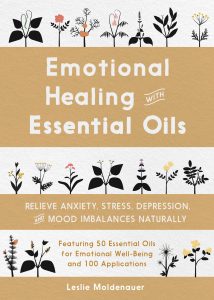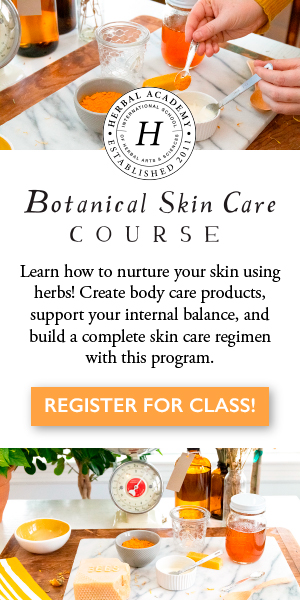Complementary Therapies to Support Mental Wellness
According to the World Health Organization, mental health is defined as “a state of well-being in which the individual realizes his or her own abilities, can cope with the normal stresses of life, can work productively and fruitfully, and is able to make a contribution to his or her community” [1].
The overall definition is an important one, and the most important part is someone that can cope with the normal stresses of life. Everyone is under stress, some of us much more than others…. life is full of ups and downs, and the more we can cope, the more resilient we are, the healthier we will be in mind and body.
Complementary therapies are very effective in helping us to become more resilient. According to a survey from the National Center for Complementary and Integrative Health, “83 million U.S. adults spent $33.9 billion out-of-pocket on visits to CAM practitioners and on purchases of CAM products, classes, and materials. In total, there were approximately 354 million visits to CAM practitioners and approximately 835 million purchases” [2]. These numbers show us that complementary and alternative medicine (CAM) therapies are rapidly gaining popularity in the U.S. Why? Because they are so effective!
If you find yourself struggling to cope and are feeling anxious, worried, missing sleep, or feeling exhausted after a good night sleep, herbal remedies are a great first therapy to try.
Herbal Remedies
An herb is any part of a plant that has a therapeutic value. The American Herbalists Guild states, “Herbal medicine is the art and science of using herbs for promoting health and preventing and treating illness. It has persisted as the world’s primary form of medicine since the beginning of time, with a written history more than 5000 years old” [3].
When used appropriately, herbal remedies are extremely safe and effective. A great place to start is an herbaceous cup of tea.Chamomile is wonderfully calming, and its subtle floral, fruity notes fill more than one million cups every single day! [4].
Herbal Tea Blend
Chamomile contains flavonoids and terpenoids, which attribute to its many medicinal properties. The following herbal blend will soothe the mind and renew the spirit.
Mix equal parts:
Chamomile
Lavender flowers
Passionflower
Spearmint
Store in a sealed mason jar. Add one teaspoon of the mixture in your favorite tea strainer, steep and relax.
Herbal Tincture
If you love to try your hand at DIY projects, an herbal tincture is also a fantastic way to help the body and mind cope with life’s more stressful moments.
Ashwagandha (Withania somnifera) is an herbal masterpiece. This herb is an adaptogen, which helps the body manage stress. In Sanskrit ashwagandha means “the smell of a horse,” indicating that the herb brings the vigor and strength of a stallion. This gem is a very effective, evidence-based remedy for stress and anxiety by helping to lower cortisol, our stress hormone [5].
Here is what you will need:
1 part dried, cut ashwagandha root (not powdered)
4 parts 100 proof vodka
Place dried ashwagandha root into a sterilized glass jar. Pour in four parts vodka. Cover the jar and place it in a dark location. Shake it every day for a minimum of four weeks, six weeks is ideal. Strain well and transfer to small 2 or 4-ounce glass bottles with dropper (amber or cobalt). Start with one dropper full per pay. If needed a healthy adult can utilize one dropper full, two times per day.
Aromatherapy
Essential oils have a pronounced effect on our emotions and can help to soothe fears, find your center and provide grounding, uplift a somber mood, and calm like no other therapy I know. Simply put, essential oils promote wellbeing.
I would like to highlight a few essential oils that I feel are superior for mental wellness.
Bergamot (Citrus bergamia) Bergamot has the ability to relax the mind yet be incredibly uplifting to the mood. Bergamot will help you to let go of any negativity you may be holding on to.
A recent crossover study performed in 2015 demonstrated that vapor inhalation of Bergamot essential oil positively changed mood states and lowered salivary cortisol levels (stress hormones) in the participants [6]. This is huge, showing bergamot is a superior choice to help stress resiliency.
Lavender (Lavandula angustifolia) A favorite of many, lavender essential oil contains sedative properties due to the constituent’s linalool and linalyl acetate. A study published in 2010 showed that inhaled lavender greatly reduced anxiety in dental patients waiting for their procedures [7].
Mandarin Red (Citrus reticulate) A study performed in 2008 by the Department of Pharmacology in Brazil found that after mice were given both Citrus reticulate and Citrus latifolia (Persian lime) via ether inhalation their sleep times increased as well as a reduction in their Obsessive-Compulsive behaviors (OCD) [8]. This study suggests that Mandarin red essential oil contains powerful anxiolytic therapeutic properties, and it smells amazing, too!
Making a Master Blend
I suggest a master blend to my clients so continuous on the fly blending is not needed. You can place your blend in a bottle and store it in a cool, dark place.
Here is what you will need:
10ml glass essential oil bottle (amber or cobalt)
Mandarin red 30 drops
Bergamot 20 drops
Lavender 10 drops
With your blend created you can:
Add 15 drops to a portable essential oil inhale
Place drops in an aromatherapy diffuser (follow manufacturers recommendations on drop amount)
Place a few drops on a cotton swab and stick in your car vent, heat vent at home, or simply hold under your nose and inhale.
*Bergamot is highly phototoxic, therefore, you should not go into the sun or tanning bed after applying to the skin. If you want to apply to the skin, always dilute responsibly in a fatty vegetable-based carrier oil and keep exposed skin out of the sun for 12-24 hours [9].
Pranayama Breathing
I know some individuals are intimidated by yoga or meditation, but everyone can practice breathing techniques. Prāṇāyāma is a Sanskrit word translated as “extension of the prāṇa (breath or life force)” or “breath control.” The word itself is composed of two Sanskrit words: prana meaning life force, and ayama to restrain or control the prana [10].
The first practice is called Nadi Shodan, or alternate nostril breathing. This pranayama should be performed in a comfortable seated posture, spine straight:
- Blow/clear your nose if needed before you begin.
- Curl your index and middle finger toward the palm.
- Rest your thumb on your right nostril, and your ring finger on your left nostril.
- Let your eyes soften and close.
- Slowly inhale deep into the belly and exhale. Close the right nostril with the thumb; inhale through the left nostril for 5 counts and exhale.
- Inhale through the left nostril again for 5 counts, hold for 5 counts, close your left nostril and exhale through the right nostril for 5 counts.
- Repeat on the right side. This makes 1 round.
- Do up to 5 rounds.
This breathing technique will help to calm your mind and slow down your thoughts. It is a great technique to try when you are having trouble falling or staying asleep.
This next breathing technique is not within the yogic tradition, but a breathing technique created by Dr. Andrew Weil called the 4-7-8 breath [11]. I recommend this technique often as it can be performed anywhere, including while driving, in a bath, reading a book, lying in bed, etc.
According to Dr. Weil:
- Exhale completely through your mouth, making a whoosh sound.
- Close your mouth and inhale quietly through your nose to a mental count of four.
- Hold your breath for a count of seven.
- Exhale completely through your mouth, making a whoosh sound to a count of eight.
- This is one breath. Now inhale again and repeat the cycle three more times for a total of four breaths.
You can complete either of these breathing techniques alongside aromatherapy for a powerful home practice.
When you are armed with proper information, basic complementary therapies are very attainable. You do not need to go it alone, let natural, complementary therapies help you to cope with stress when you need a little assistance. To your healthy explorations. xo
References
[1] World Health Organization http://www.who.int/
[2] The Use of Complementary and Alternative Medicine in the United States: Cost Data. https://nccih.nih.gov/news/camstats/costs/costdatafs.htm
[3] Herbal Medicine Fundamentals https://www.americanherbalistsguild.com/herbal-medicine-fundamentals
[4] Chamomile: A herbal medicine of the past with bright future https://www.ncbi.nlm.nih.gov/pmc/articles/PMC2995283/
[5] Chandrasekhar, K. et al (2012) A Prospective, Randomized Double-Blind, Placebo-Controlled Study of Safety and Efficacy of a High-Concentration Full-Spectrum Extract of Ashwagandha Root in Reducing Stress and Anxiety in Adults. Indian journal of psychological medicine. Jul-Sep; 34(3): 255–262
[6] Watanabe, E. et al (2015) Effects of Bergamot (Citrus bergamia (Risso)Wright & Arn.) Essential Oil Aromatherapy on Mood States, Parasympathetic Nervous System Activity, and Salivary Cortisol Levels in 41 Healthy Females. Department of Immunology. 2015; 22:43–49
[7] Kritsidima, M. et al (2009) The effects of lavender scent on dental patient anxiety levels: a cluster randomised-controlled trial. Community Dentistry and Oral Epidemiology. Feb;38(1):83-7.https://www.ncbi.nlm.nih.gov/pubmed/19968674
[8] Gargano, A. et al (2008) Essential Oils from citrus latifolia and Citrus reticulate reduce anxiety and prolong ether sleeping time in mice. Department of Pharmacology, Institute of Bioscience, UNESP-Sao Paulo State University, Sao Paulo, Brazil. Published in Tree and forestry science and biotechnology 2 (special issue 1) 121-124
[9] Tisserand, R., Young, R., & Williamson, E. M. (2014). Essential oil safety: A guide for health care professionals. Edinburgh: Churchill Livingstone/Elsevier
[10] What is Pranayama? https://www.ekhartyoga.com/articles/practice/what-is-pranayama
[11] Three Breathing Exercises and Techniques https://www.drweil.com/health-wellness/body-mind-spirit/stress-anxiety/breathing-three-exercises/
Like so many practices in life, I encourage you to become educated on the proper use of essential oils. When using them, please do so cautiously, understanding that there is often misinformation on the internet. You can be assured that I support only educated and proven resources. While essential oils should not be feared they should be respected and used properly to ensure the safety of the individuals using them.
Please note that I am not a medical practitioner. The content of this website is provided for general informational purposes only and is not intended as, nor should it be considered a substitute for, professional medical advice. Do not use the information on this website for diagnosing or treating any medical or health condition. If you have or suspect you have a medical problem, promptly contact your professional healthcare provider. By using this website, you assume full responsibility and liability for your own actions.
BEFORE YOU GO! Remember to sign up for my FREE Facebook group! Hang out with me and THOUSANDS of other Essential Oil lovers looking to learn, click on to join Real Essential Oil Education Group!





